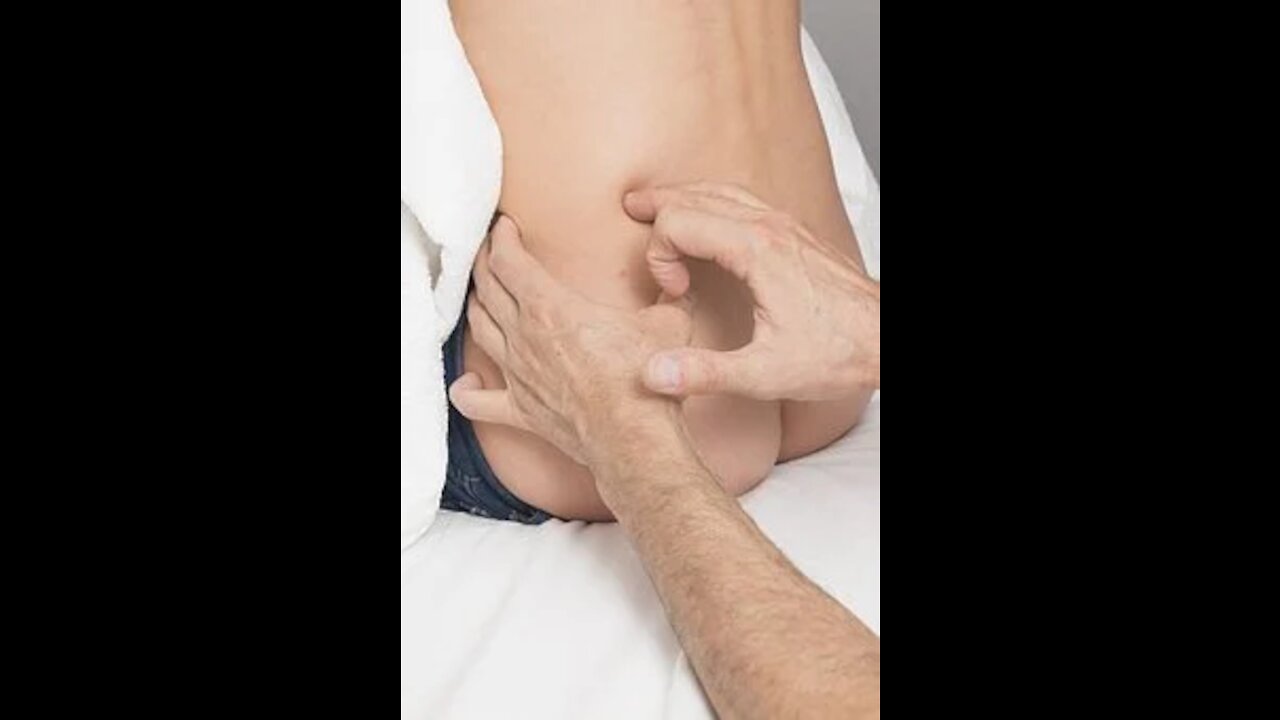Premium Only Content

She Had An Overactive Bladder, Then She Did These Exercises: it's All Fixed Now
5 Ways to Treat An Overactive Bladder
more info visit this site-https://35de1igoyeu2tecenoyhvgw8xp.hop.clickbank.net/
As a general rule, most people urinate about 6-7 times per day. If you feel the need to pee more frequently or you experience a hard time holding in urine when sleeping and wake up more than once or twice a night, your bladder may be overactive. This condition can cause incontinence and other negative effects and should be treated as soon as possible.
Control your fluid intake.
It’s important to drink enough water during the day in order to stay hydrated, but drinking too much isn’t actually good for your health as it can cause you to use the bathroom more often. To avoid overwhelming your bladder, it’s better to reduce your fluid intake by 25% so that your bladder is not completely full.
You should also avoid drinking coffee, black tea, alcohol, and carbonated beverages because they can put more stress on your bladder.
Train your bladder.
Schedule bathroom breaks. To prevent incontinence, try to determine how often you go to the bathroom by keeping a voiding diary. Then add about 15 minutes to that time (for example, if you use the toilet every hour, schedule bathroom visits at every hour and 15 minutes). Go to the bathroom at each scheduled visit even if you don’t actually need to pee.
Delay urination. You can address your overactive bladder by extending the period of time between your trips to the bathroom. Begin with small delays (about 30 minutes) and gradually work your way up to urinating every 3-4 hours.
Practice double voiding. Double voiding is the technique of urinating twice in a short period of time. Here’s the most effective way to do it: Once you’ve finished urinating, wait for 20-30 seconds. After that, lean forward slightly and try to urinate again.
Control your weight.
Being overweight can aggravate bladder problems and cause stress incontinence. If you develop stress incontinence, your bladder leaks small amounts of urine when you’re physically active or when you cough or sneeze. Losing weight can help you relieve excess pressure on your bladder and surrounding muscles.
Get acupuncture.
Some studies show that acupuncture stimulation applied to the lumbosacral (lower back) region can help you increase bladder control and treat frequent urination by releasing stress and tension in the area.
Strengthen your muscles.
In order to control urination, you can strengthen the muscles of your bladder. First, you’ll need to identify those muscles by stopping the flow of urine midstream. Once you feel your pelvic floor muscles, you can start training them by doing the following exercises with an empty bladder for at least 6-8 weeks.
Dead bug crunches
The initial position: Lie on your back with your arms straight up to the ceiling and your knees bent to 90 degrees.
Inhale, tighten your pelvic floor muscles, and extend your right arm beyond your head and right leg forward.
Release your pelvic floor, exhale, and draw your arm and leg back to the initial position.
Repeat 10 times on each side.
Wall squats
The initial position: Stand with your back against the wall.
Inhale, tighten your pelvic floor muscles, and lower to a chair-sitting position while keeping your back against the wall.
Hold the position for 10 seconds.
Exhale, lift yourself back up, and release your muscles.
Repeat 10 times.
Kegel exercises
The initial position: Lie on your back with your knees bent and your feet flat on the floor.
Inhale, tighten your pelvic floor muscles, and push your hips off the floor.
Hold this position for 10 seconds.
While lowering your hips, exhale and relax your pelvic floor muscles.
Repeat 10 times.
Share your opinions with us in the comments!
Disclaimer: We strongly advise you to consult a specialist before beginning any treatment program or making any adjustment to your health care, diet, or/and your lifestyle. Do not remove yourself from any prescribed medications or treatments without consulting your physician. Any and all dietary supplements or nutritional products and treatments discussed in this video are not intended to diagnose, treat, prevent, or cure any health condition. The information contained in this video is for general information and for educational purposes only. Nothing contained in this video is or shall be or considered, or used as a substitute for, medical advice, diagnosis, or treatment. Viewers should always seek the advice of a medical practitioner with any questions regarding their health. Never disregard, avoid, or delay obtaining medical advice or following the advice of a physician because of something you have seen or watched.
-
![[War Thunder] It's Fixed No. 2!](https://1a-1791.com/video/s8/1/_/Y/e/O/_YeOb.0kob-small-War-Thunder-Its-Fixed-No.-2.jpg) 8:16
8:16
ODMGaming
3 years ago[War Thunder] It's Fixed No. 2!
18 -
![It's Fixed! Improvements in Game Mechanics - Ep. 1 [War Thunder]](https://1a-1791.com/video/s8/1/N/H/f/O/NHfOb.0kob-small-Its-Fixed-Improvements-in-G.jpg) 10:29
10:29
ODMGaming
3 years agoIt's Fixed! Improvements in Game Mechanics - Ep. 1 [War Thunder]
12 -
 5:00
5:00
It's for YOU!
3 years agoIt's for YOU! What Animal Made These Tracks? (Episode 18)
17 -
 2:09
2:09
The Ron Paul Liberty Report
3 years agoBureaucratic Science: First, It's "Settled" ... Then, It's "Evolving"
1.85K15 -
 1:01
1:01
AfricanNewsAgency
3 years ago $0.01 earnedThese Five Simple Exercises Can Help Achieve Firmer Breasts
49 -
 3:15:08
3:15:08
I_Came_With_Fire_Podcast
17 hours ago“Trump-Zelensky BEATDOWN | Europe BUILDS MUSCLE | NEWSCUM Podcast”
26.5K3 -
 41:25
41:25
CatfishedOnline
17 hours ago $2.41 earned23-Yr-Old Drove 2,650 Miles to Meet Online Girlfriend in Romance Scam
47.3K6 -
 1:56:18
1:56:18
Bare Knuckle Fighting Championship
2 days agoCountdown to BKFC FIGHT NIGHT ALBUQUERQUE & FREE LIVE FIGHTS!
40.8K3 -
 1:58:08
1:58:08
Anthony Rogers
16 hours agoHow To Beat Kids At Video Games
16.1K1 -
 1:46:26
1:46:26
Vigilant News Network
18 hours agoDiddy’s Epstein Moment: Is the Fix Already In? | The Daily Dose
93.1K9